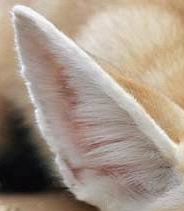Many Stranded Bottlenose Dolphins May Be Deaf
In waters from Florida to the Caribbean, dolphins are showing up stranded or entangled in fishing gear with an unusual problem: They can’t hear.
More than half of stranded bottlenose dolphins are deaf, one study suggests. The causes of hearing loss in dolphins aren’t always clear, but aging, shipping noise and side effects from antibiotics could play roles.
Dolphins are a highly social species. They use echolocation to orient themselves by bouncing high-pitched sound waves off of objects in their environment. They also “speak” to one another in a language of clicks and buzzing sounds. Because hearing is so fundamental to dolphins’ survival, losing it can be detrimental.
For more information about the content discussed in this article visit: Discovery News
Spiders Have Personality Too
Spiders, like humans and many other species, have their own distinctive characters that help to shape their individual lifestyles, a new study suggests. Depending on the type of spider, the personality differences could help to predict whether the individual frequently pounces and attacks or is more likely to calmly sit around and observe.
For more information about the content discussed in this article visit: Discovery News
‘Mysterious’ Cow Mutilations Spur Alien Theories
The mysterious deaths of three cows on a remote Missouri ranch has spawned a variety of weird theories, from Satanic activity to aliens.
The first mutilated cow was found in December 2011. The cow had obviously been cut on the side of her jaw. Her tongue and ear were gone. The next discovery occurred on July 9. Farmers immediately noticed the udder had been completely removed and the reproductive organs were gone too. Finally on July 19, the third cow was found. Its heart was exposed, its teats were cut off and its tongue was cut out. The cuts all looked surgical with clean, precise incisions. In all three deaths, there was no blood despite the animals’ gaping wounds.
It certainly sounds creepy and mysterious. So what’s going on?
Often so-called “mysterious” wounds are actually created by ordinary predators and scavengers, both large (such as vultures, raven, and crows) and small (such as blowflies and maggots). In many cases, what has been described by ranchers and others as cuts with “surgical” precision turned out to be ordinary decomposition.
For more information about the content discussed in this article visit: Discovery News
Kestrel
Kestrel: Falco sparverius
The slender American Kestrel is roughly the size and shape of a Mourning Dove, although it has a larger head; longer, narrow wings; and long, square-tipped tail. To hear what a kestrel sounds like click here: Kestrel Call.
American Kestrels occupy habitats ranging from deserts and grasslands to alpine meadows. You’re most likely to see them perching on telephone wires along roadsides, in open country with short vegetation and few trees.
Fun Fact: Unlike humans, birds can see ultraviolet light. This enables kestrels to make out the trails of urine that voles, a common prey mammal, leave as they run along the ground. Like neon diner signs, these bright paths may highlight the way to a meal—as has been observed in the Eurasian Kestrel, a close relative.
For more information about the content discussed in this article visit: All About Birds
















